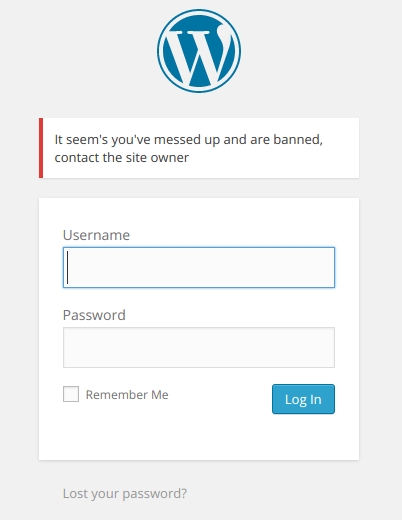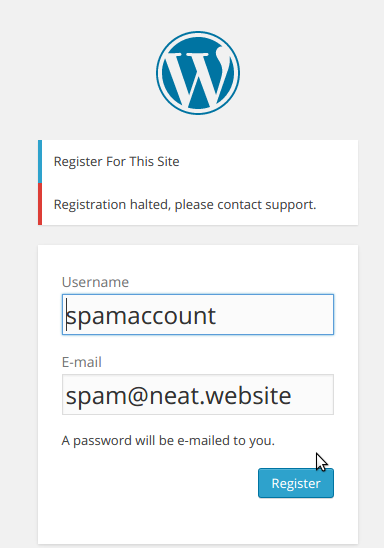Simple Email Filter and Banning Plugin for WordPress
In my last post I showed you how to make a really simple, programmatically maintained filter to deny registration on your WordPress sites. But, if you're the average user, you probably don't want to dive into source code when you're updating a list of spam mails, especially since they might change often or you just like a graphical interface for your administrative work.
Either way, I've got you covered with my new plugin. I'm calling it ** Simple Email Filter & User Ban **, a lengthy, but correct name.
Here's how it works, first up you install and activate the plugin like you do any other WordPress plugin. Then you'll notice a couple of new things.
In the Users listing you'll have a new column and new actions
You'll be able to see the last known IP Address of a user who has logged into your site. This is useful for using iptables to drop packets from malicious users who don't know how to evade those types of things.

You'll also notice that when you hover over a user you'll be able to click an action button to ban or unban that user.


Once banned, whenever they try to log in they'll get a nice message that you can set in your wp-config file like this:
define('SEF_BAN_MESSAGE', 'It seem\'s you\'ve messed up and are banned, contact the site owner');
And it will look something like this on their site:

A new options page is available for you!
In the Registration Denial's setting page, you'll be able to manage the list of domain and strings that you won't accept registrations from. This means no more managing the programmatic list and using a simple list interface instead

Once you've listed the domains you count as spam, you'll be able to live in moderate peace while the spam users will only see messages like this:

As with the ban message, you can set the denial message from wp-config as well:
define('SEF_DENY_MESSAGE', 'Registration halted, please contact support.');
And that's it!
Enjoy! If you have ideas or enhancements feel free to send me a pull request on github, and if you have any problems you can open an issue there. The source code is Open and freely available for modification, though I of course appreciate a backlink and a mention if you use my code.